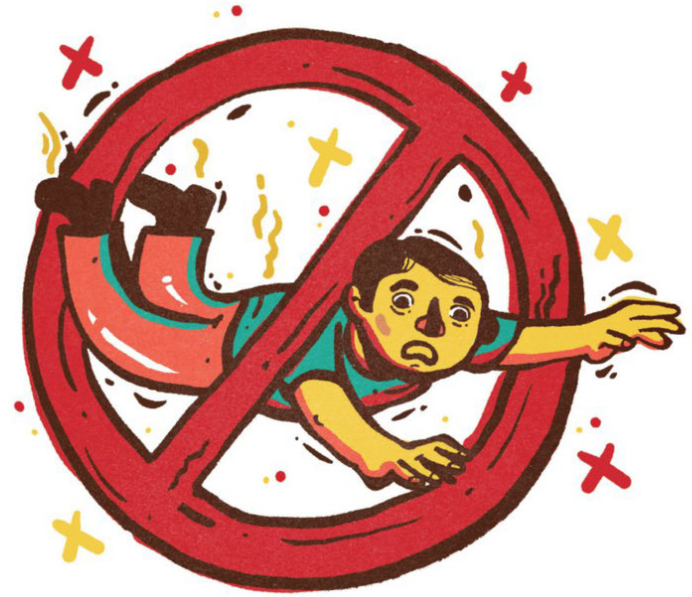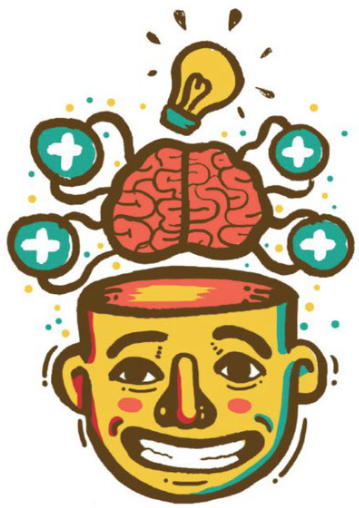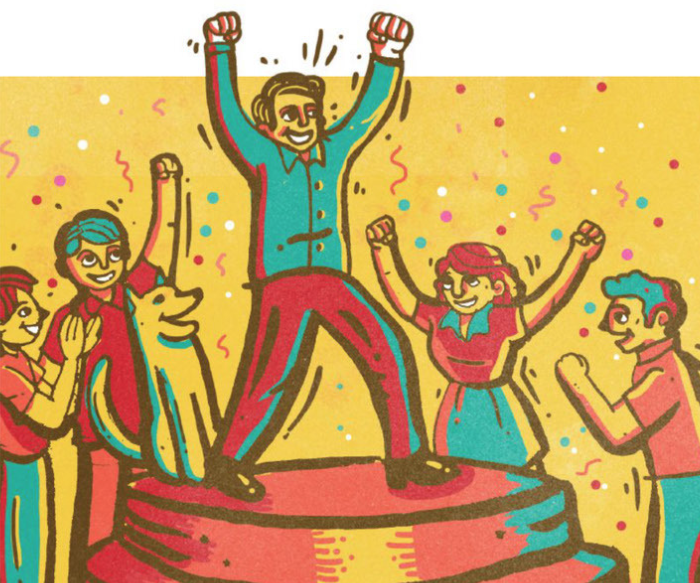Traditional management theory has a lot to answer for. Don’t tolerate failure, keep employees emotionally at an arm’s length, discourage individualism, focus on remedying weakness as opposed to playing up strengths, frown at play, motivate workers by throwing money at them, or failing that, wielding a big stick …. The list of prohibitions and negativity goes on.

It is surprising then that the realization happy workers also tend to be more productive workers was one of management theory’s earlier discoveries. As part of a Harvard study of the Hawthorne Works factory in Chicago in the mid-1920s, researchers observed that employee performance could be greatly boosted by influencing not only his physical environment but the social context in which he toiled. A worker was more than an input. He or she also had feelings. And when employees were in a positive state of mind, they did more, better work.
That finding set off decades of experiments to boost productivity by trying to make workers more joyful. Yet the results were equivocal. This was partly because they were measuring the wrong indicator of happiness — job satisfaction (something that can be guaranteed by a paycheck but that doesn’t translate into improved performance over time) — and partly because happiness itself is such an elusive target.
In recent decades, however, a consensus has started to form on what constitutes the kind of positive mindset that drives performance —and it’s not simply sensory pleasure that comes from a bowl of free M&Ms in the kitchen. It’s about inner well-being.
“Happiness isn’t just about feeling good every moment of the day, and it’s not just about pleasure. That’s hedonism, and we’re not seeking that,” says Annie McKee, co-author of Primal Leadership. “Happiness at work is a deep and abiding pleasure that is fueled by a sense of meaningful purpose, hope and friendships.”
Advertisement
McKee’s list reflects much of the PERMA acronym developed by Martin Seligman, a professor of psychology at the University of Pennsylvania, and one of the foremost experts on the study of happiness.
The acronym, which he sets out in his bestseller Flourish: A Visionary New Understanding of Happiness and Well-Being stands for just about everything you need to know about fostering happiness:
- Positive emotion (optimism)
- Engagement (feeling in the flow at work, when workers are using their strengths)
- Good relationships (the importance of friends and feeling a part of the tribe)
- Meaning (feeling that the work being done matters, including to the bottom line)
- Accomplishment (the sense of making progress)
Seligman’s research suggests workers are happiest when they’re lost in a meaningful project, working toward a higher goal, or being helpful. Those factors also happen to be aligned with a productive workplace.
Happiness thus should be light but not trivial. Get such a workplace ethos right and the benefits are significant.

In an analysis of 225 academic studies, Sonja Lyubomirsky, Laura King, and Ed Diener and the Gallup Organization found that happy employees have, on average, 31 percent higher productivity; their sales are 37 percent higher; their creativity is three times higher. Other research has shown happy workers take one-tenth the sick leave, are more loyal, more likely to satisfy customers (who is not drawn to a happy worker?), and more likely to engage in safe workplace conduct. They deal with stress better, manage complexity better, are more engaged, motivated, resilient, energetic, and make smarter decisions.
Advertisement
The findings hold true across academic disciplines including psychology, neuroscience and management studies and regardless of the worker’s role or the industry in which he participates.
“Every business outcome shows improvement when the brain is positive. I call this the ‘happiness advantage,’” says Shawn Achor in his book of the same name (The Happiness Advantage).
“It turns out that our brains are literally hardwired to perform at their best not when they are negative or even neutral, but when they are positive,” Achor says.
The reason is because unlike fear or anger or anxiety, which cause our nervous systems to close down and inhibit rational functioning, positive emotions that go along with being happy, like enthusiasm and excitement, joy and pleasure, actually help us to think better.
“Our minds open up; we can take in more information; we can process it more quickly. Ultimately, we can make better decisions. Those conditions allow us to be more successful at work,” McKee says.
With such a strong case for happiness, it makes you wonder why most workplaces are anything but joyful. According to surveys done by Gallup, upwards of two-thirds of employees are either neutral, which means they don’t care about their work, or are actively disengaged, which suggests they are hurting the interests of their employer.
Advertisement

In many instances, the lack of cheer at work is because of an entrenched suspicion of levity — that it somehow signals a lack of professionalism.
Even in cases where companies try hard to boost happiness levels by investing in happiness coaches, team-building exercises, gameplays, funsultants or Chief Happiness Officers, the record is not great.
As such programs have found, the frustrating thing about positive emotions — happiness, but also awe, wonder and love as well — is that they can’t be forced. It doesn’t work when you tell yourself to be happy and when the pressure comes from others, especially when it is top down, as in a business setting, it’s worse. There’s something in the makeup of happiness that requires it arise freely; indeed, focusing on happiness can actually make people feel less happy.
There is also a problem with workers themselves, actually with all humans, it’s as if we are wired to resist lasting happiness.
Pay someone more money or celebrate the completion of a big project, and after a fairly brief period his level of happiness returns to its less-than-satisfactory base. Psychologists refer to this as the hedonic treadmill — no matter the effort applied, we end up in the same place. Evolutionary scientists theorize this tendency serves as protection against complacency in a world of risk, but for a manager in 2018 it’s just really annoying
(Interestingly, research shows the one time money does make people happy on a lasting basis is when it improves their social rank, i.e., makes them richer than their friends. But that’s not a sustainable pay strategy.)
So what to do? How to build an army of happy worker bees?
The first step is to hire for attitude. The idea that a happy demeanor is to a large extent genetically determined is one of psychology’s most firmly held beliefs; that lottery winnings or even spinal paralysis doesn’t change.
Harvard social psychologist Dan Gilbert estimates genetics account for about 50 percent of your workers’ disposition.
That leaves a lot that you can work with.
“The goals you set, the culture you foster, the habits you cultivate, the way you interact with workers, how you think about stress — all these can be managed to increase your staff’s happiness and your chances of success,” Achor says.
The good news is that the No. 1 factor that will lift spirits is progress in meaningful work. Help your workers do their jobs better and they become happier, thereby laying the foundation for even better business results. It’s called the progress loop.

“Understand that people matter, feelings matter, and it’s the No. 1 job of a manager to create a climate where people feel good about what they’re doing, where they’re happy, engaged and ready to share their talents,” McKee says.
Ultimately, happiness can be cultivated by setting a clear direction, giving people what they need to do the job, nourishing a spirit of positivity … and getting out of their way.
20 Ways to make Your Business Happier
Research suggests we have a happiness set point we soon revert to after most events, happy or sad. So, aside from plying your staff with wine, is there anything that can be done to make them more content? It turns out quite a lot. We get you started with two dozen here, and be sure to check out our online extras at ppmag.us/joy.
1. Set a Positive Morning Routine
Employees’ moods when they clock in tend to affect how they feel the rest of the day as well as their perceptions of customers and how they interact with them. “We saw that employees could get into these negative spirals where they started the day in a bad mood and just got worse over the course of the day,” says Ohio State University’s Steffanie Wilk. From the moment they come to work, or even the night before, get staff thinking about something exciting or challenging that day. Have nothing? Schedule something. Providing premium coffee helps, too.
2. Hire for a Positive Attitude
“Seventy-five percent of long-term job success is predicted not by intelligence and technical skills, which is normally how we hire,” Achor says. Instead, it’s predicted by three categories: optimism, social connections and the way people handle stress. In The Happiness Advantage he recounts an experiment he ran with MetLife to hire people based on optimism. The optimistic group outsold its pessimistic counterparts by 19 percent in year one and 57 percent in year two. They were also less likely to quit.
3. Little Things Mean a Lot
Here’s an interesting happiness fact: Frequency beats intensity. Lots of little good things make people happier than a handful of big things, because they give people frequent, regular boosts. Stanford professor Jennifer Aaker says the findings lead to a simple conclusion: The things that make you happy? Do them more often. “Focus on increasing the amount of good stuff in your life versus reducing the amount of bad stuff,” she says.
4. Set Goals
Have staff set written goals. Writing about goals makes people happier and more likely to follow through with them.
5. Focus on Strengths
Countless studies have found workers gain a boost in positive emotions the more they use their signature strengths — the talents that set them apart from others. “Identify their signature strengths and then make room to allow them to use their strengths more often,” Martin Seligman writes in Authentic Happiness. For workers, there is intrinsic satisfaction. For employers, a much higher state of performance.
6. Remove the Hassles
While it’s true happiness comes from the small pleasures in life, it’s also the little hassles that are most apt to get people down. The same is true in the workplace where little hassles are a reliable predictor of job dissatisfaction. Make it a habit to ask your staff for tweaks than can be made to the way things are done around the store.
7. Count Your Blessings
Showing gratitude for the good things in life is the most powerful happiness-boosting activity there is, Barker says. And Seligman has an easy exercise to build gratitude, called “Three Blessings.” For the next week, urge your workers to set aside five minutes each night to write down three things that went well in the day, or just what’s right in their life, and — this is important — why they went well. “Your brain will be forced to scan the last 24 hours for potential positives. “In just five minutes a day, this trains the brain to be more skilled at noticing possibilities for professional and personal growth, and seizing opportunities to act on them,” Achor says.
8. Promote Meditation
Everyone has him: an internal narrator, that voice in your head. And he’s usually a jerk. A nonstop running commentary of wants and needs, second-guessing, regretting the past and worrying about the future. One of the best ways to silence him (or her) is meditation. “Meditation takes practice, but it’s one of the most powerful happiness interventions,” Achor says in The Happiness Advantage. “Regular meditation can permanently rewire the brain to raise levels of happiness, lower stress, even improve immune function.” As a boss, schedule some time for meditation, or provide mindfulness apps (we recommend Headspace) to remind your workers to take time out to breathe deep and relax.
9. Be a Model
A long line of research on emotional contagion shows that people in groups “catch” feelings from others through behavioral mimicry and subsequent changes in brain function. “If you regularly walk into a room smiling with high energy, you’re much more likely to create a culture of joy than if you wear a neutral expression. Your employees will smile back and start to mean it. So consciously model the emotions you want to cultivate in your company,” says the Harvard Business Review’s guide to Everyday Emotional Intelligence.
10. Find Meaning
Experiments show that having a sense of higher purpose — a sense that your work has meaning and is helping someone — stimulates production of oxytocin, the “hug hormone.” Meaning can be as simple as giving a customer helpful advice or providing a genuine service for the community.
11. Institutionalize Fun
According to a case study of Vail Resorts in Harvard Business Review, the culture of joy has been incorporated into the annual review, which indicates how well each employee integrates fun into the work environment and rates everyone on supporting behaviors, such as being inclusive, welcoming, approachable and positive. Management tactics, special outings, celebrations and rewards all support the emotional culture. Rather than asking people to follow standardized customer service scripts, they tell everyone to “go out there and have fun.” Resort managers consistently model joy and prescribe it for their teams. At an annual ceremony, a Have Fun award goes to whoever led that year’s best initiative promoting fun at work.
12. Ask for Help
Realize that you can’t and shouldn’t be Superman or Wonder Woman. A boss willing to show vulnerability makes for a happier workplace. “My research team has found that this stimulates oxytocin production in others, increasing their trust and cooperation. Asking for help is a sign of a secure leader,” writes Paul Zak in The Neuroscience of Trust, explaining that it taps into the natural human impulse to cooperate with others.
13. Exercise
A Finnish study showed that those who exercise at least two to three times a week experience significantly less depression, anger, stress and “cynical distrust” than those who exercise less or not at all. What can you do as a business owner? Rotate dog-walking duties. Enter the store in a fun run and get them training. Let them take an extra 10 minutes at lunch to fit in a CrossFit class.
14. Hug More
Nowadays, this may be dangerous advice, but try to touch your workers more (that is, handshakes, pats on the back and the like). Research shows getting five hugs a day for four weeks “increases happiness big time,” Barker says. “Touching is incredibly powerful. It makes you more persuasive, increases team performance … heck, it even boosts math skills,” he writes on his blog.
15. See the Light
If you live in the northern states, get a light box. According to research from UBC Hospital in Vancouver, Canada, light therapy — it provides the kind of rays that elevate levels of happiness-boosting serotonin in your brain — is effective at combating seasonal affective disorder. If you live in other parts of the country, be sure your staff members get outside regularly. A study from McGill University in Montreal has shown that by spending at least 30 minutes a day outdoors — even during winter — should be enough to offset your seasonal drops in serotonin.
16. Build the Right Emotional Culture
The traditional business environment isn’t often conducive to good cheer. Researchers at Fairfield University found that working professionals felt more comfortable expressing anger than joy on the job. (They reported expressing anger three times as often.) Even décor may suggest what’s expected emotionally. Signs with lists of rules and consequences for breaking them can reflect a culture of fear. Photos of employees laughing at social events, Kleenexes stapled to potentially stressful memos, or chocolate kisses taped to boring ones can signal a culture of joy.
17. Savor the Good Stuff
Clichés like “stopping to smell the roses” and “it’s the little things in life” are actually effective. Happiness researchers call such strategies “savoring” and have even put a hard figure on it: People who regularly take notice of things that are positive — sunshine, flowers, coffee — were 12 percent more likely to say they were satisfied with their lives. The point, says behavioral science writer Winifred Gallagher in her book Rapt, is that “you see what you look for. And you can train yourself to attend to the joy out there waiting to be had, instead of passively waiting for it to come to you.”
18. Celebrate with Rituals
Sharing and celebrating successes is a time-honored way to drive performance, define best practices, boost team solidarity … and elevate pleasant emotions. The neuroscience shows that recognition has the largest effect on emotion when it occurs immediately after a goal has been met, when it comes from peers and when it’s tangible, unexpected, personal and public. “Public recognition not only uses the power of the crowd to celebrate successes, but also inspires others to aim for excellence,” Zak writes in The Neuroscience of Trust. “And it gives top performers a forum for sharing best practices, so others can learn from them.”
19. Tough Guys Come Last
Is Gen. George S. Patton your idea of an effective leader? Consider this: Researchers found annual prizes for efficiency and preparedness in the U.S. Navy are far more frequently awarded to units whose commanding officers are openly encouraging. Psychologist Barbara Frederickson says her research into fostering a state of flow in workers has shown we need to have three positive interactions for every negative one in order to thrive.
20. Foster Friendships
Science has shown repeatedly that when employees build social ties, their performance improves. People who care for one another give generously of time, talent and resources. Gallup found that close work relationships boost employee satisfaction by 50 percent and that people with a best friend at work are seven times as likely as others to engage fully in their work. Help people build social connections by sponsoring lunches, after-work parties and team-building activities. It may sound like forced fun, but when people care about one another, they perform better because they don’t want to let their teammates down.